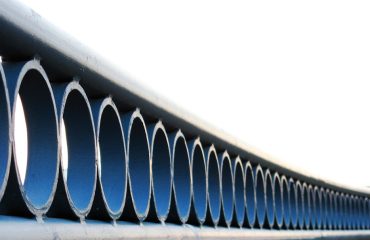Material selection in construction is a critical process that significantly impacts the project’s success, from its structural integrity and longevity to its aesthetic appeal and environmental footprint. Choosing the right materials requires careful consideration of numerous factors, balancing performance, cost, and sustainability. This guide delves into the key aspects of material selection, providing insights for architects, engineers, and construction professionals.
1. Understanding Structural Performance Requirements
The primary function of any building material is to provide structural support. This necessitates a thorough understanding of the building’s intended use, anticipated loads (dead loads, live loads, wind loads, seismic loads), and environmental conditions. Different materials exhibit varying strengths, stiffness, and resistance to different types of stress. For instance, steel is renowned for its high tensile strength and is often used in high-rise buildings and bridges. Concrete, on the other hand, excels in compressive strength and is widely used in foundations and columns. Timber, a sustainable option, offers good strength-to-weight ratio and is suitable for various applications, but its performance is affected by moisture content and insect infestation.
Accurate structural analysis is crucial before material selection. This involves calculating the forces acting on the structure and determining the required material properties to withstand these forces safely. Software tools and engineering expertise are often employed to ensure optimal design and material selection.
2. Durability and Longevity: Weathering the Storm
The durability of a material refers to its ability to withstand environmental factors such as weathering, temperature fluctuations, and chemical exposure. Materials exposed to harsh weather conditions require specific properties to resist degradation. For example, exterior cladding materials need to be resistant to UV radiation, moisture, and freeze-thaw cycles. The choice might be between durable materials like brick or stone, which offer excellent longevity, or more cost-effective options that may require more frequent maintenance, such as certain types of wood or composite panels.
Consideration should also be given to the material’s resistance to fire, pests, and biological growth. Fire-resistant materials are crucial for ensuring building safety, while pest-resistant options are essential in regions prone to termite or insect infestations. The lifecycle cost of the material, which includes initial cost, maintenance, and replacement, should be carefully evaluated.
3. Cost-Effectiveness: Balancing Budget and Quality
Cost is a significant constraint in any construction project. Material selection needs to balance quality and budget. While choosing the most expensive materials might seem like the best option, it’s often more efficient to select materials that offer the optimal balance of performance and cost. A thorough cost analysis should be conducted, considering not only the initial material cost but also the costs associated with transportation, installation, maintenance, and potential future replacements.
Life cycle costing is a valuable approach that considers all costs over the material’s lifespan, helping to make informed decisions that optimize long-term value. This approach can highlight scenarios where a slightly more expensive, longer-lasting material might be more cost-effective in the long run than a cheaper, shorter-lasting alternative.
4. Sustainability and Environmental Impact: Building Green
Sustainable construction practices are increasingly important, and material selection plays a crucial role. The embodied carbon of a material, which represents the carbon emissions associated with its extraction, manufacturing, transportation, and installation, should be considered. Choosing materials with low embodied carbon, such as recycled materials or locally sourced products, reduces the project’s environmental impact. Furthermore, the material’s recyclability and potential for reuse at the end of its life cycle are crucial factors.
The use of sustainable materials contributes to LEED certification and other green building ratings, enhancing the project’s marketability and appeal. This includes exploring options like bamboo, recycled steel, and sustainably harvested timber.
5. Aesthetics and Design Considerations: Form and Function
The aesthetic appeal of a building is crucial, and material selection significantly influences its overall look and feel. The color, texture, and pattern of the materials contribute to the building’s design and its integration with the surrounding environment. The selection should align with the architectural style and design intent, creating a visually pleasing and harmonious structure.
Factors such as the material’s ability to reflect or absorb light, its thermal properties, and its potential for customization should be considered. The use of natural materials can create a warm and inviting atmosphere, while modern materials can offer sleek and contemporary aesthetics. Careful consideration of these factors ensures the final product is both functional and aesthetically pleasing.
In conclusion, material selection in construction is a multifaceted process requiring careful consideration of various factors. By understanding structural requirements, prioritizing durability and longevity, managing costs effectively, embracing sustainability, and considering aesthetic appeal, construction professionals can make informed decisions that lead to successful and sustainable projects.
Tags: material selection, construction materials, sustainable construction, building materials, structural engineering




